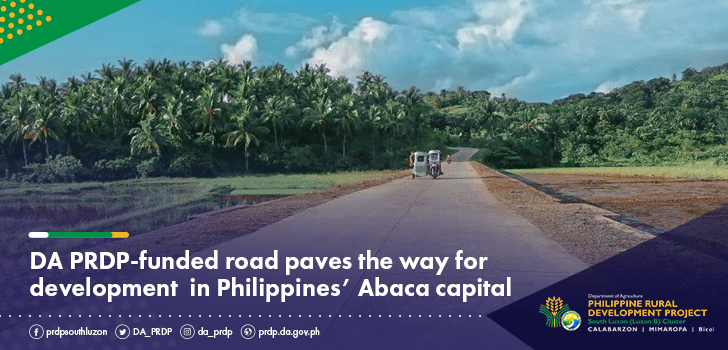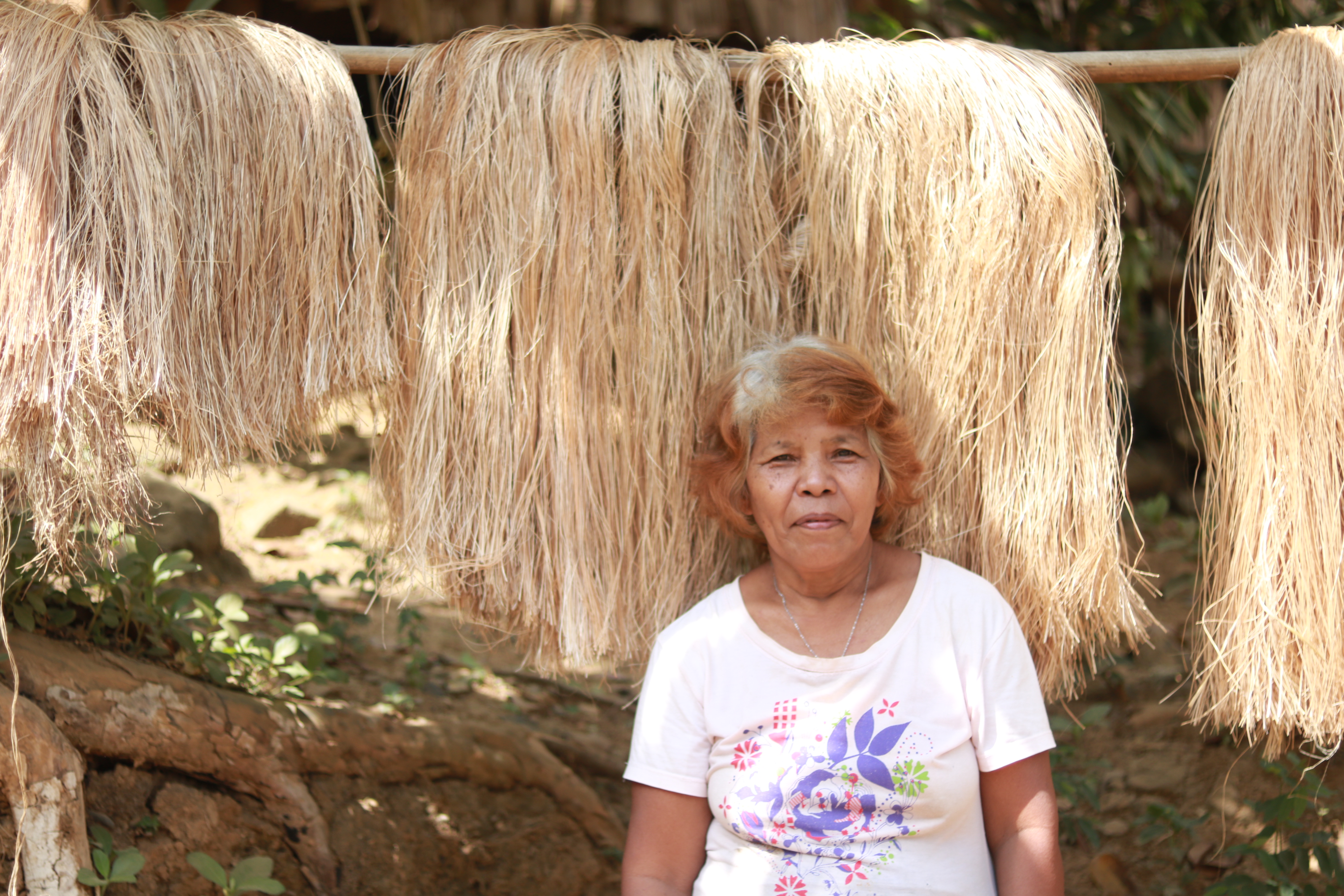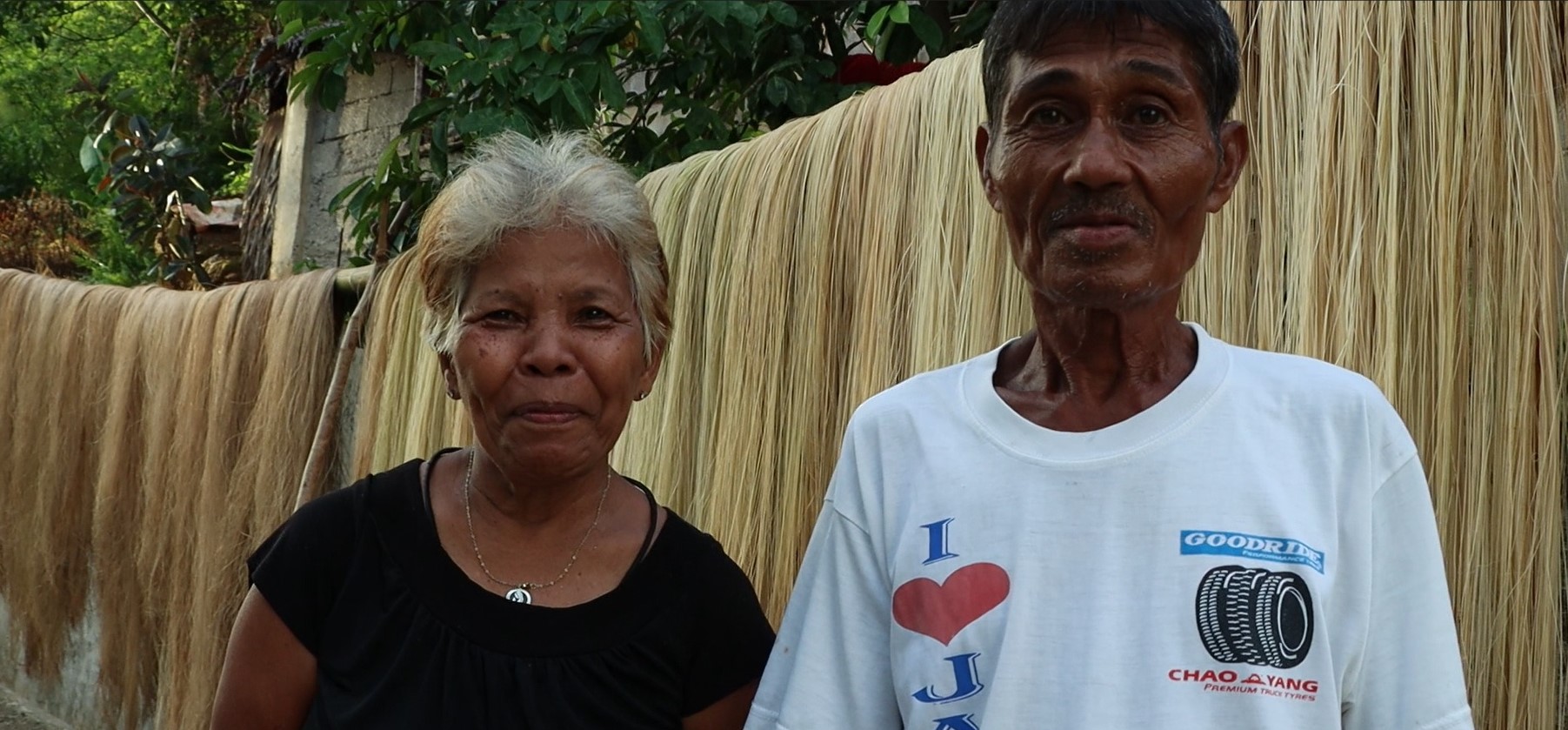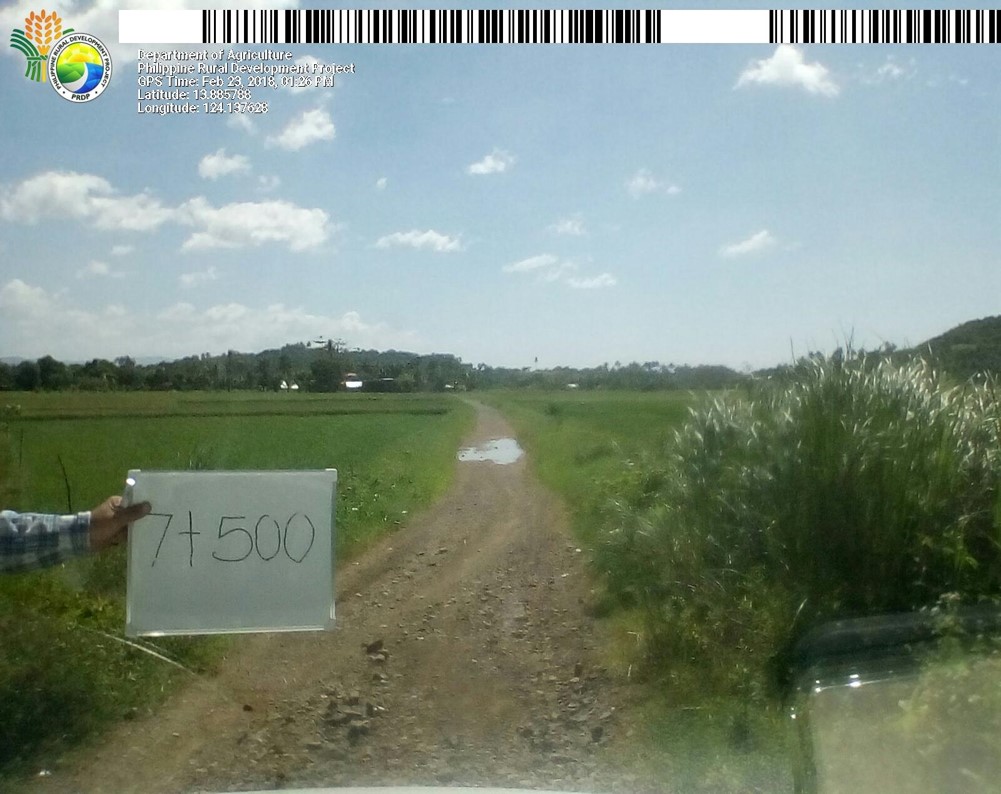
DA PRDP-funded road paves the way for development in Philippines’ Abaca capital
Abaca cultivation is the basic source of income of Florinda Onan, 70, and her husband, Alpio, 64, of Brgy. Panique in Caramoran, Catanduanes. To transport their produce to Brgy. Sabangan, they used to travel for three hours via motorcycle with a top-down sidecar.
“We were accustomed to a narrow road, but because the unpaved road was surfaced with stone, it was extremely tough for our community, particularly for the abaca growers and tricycle drivers,” Florinda told DA PRDP Bicol in an interview in 2019.
The Department of Agriculture-Philippine Rural Development Project (DA-PRDP) funded the construction of the P126.98 million-worth Concreting of Junction Sabangan-Datag East Farm-to-Market Road (FMR). The project was designed to address post-harvest processing and logistical issues affecting abaca, the province’s primary commodity, and other commodities such as coconut, rice, and tiger grass that are also abundant in the four barangays within the road influence area, namely Brgy. Datag, Brgy. Maui, Brgy. Panique, and Brgy. Sabangan.
Almost four years later, Florinda warmly welcomed the DA PRDP team conducting the Rapid Appraisal of Emerging Benefits (RAEB), an evaluation initiative of the PRDP management, to share how her family benefited from the completed subproject.
“After the road was concreted, many things changed. Previously, getting to the market would take many hours, but using a top-down motorcycle, we can now travel there in about one hour and 30 minutes. Before delivering our abaca to the merchants, we used to borrow money to buy meals. We can now afford to purchase delectable food,” Onan narrated.
Onan is among the 503 households of farmer and fisherfolks of the DA PRDP-funded subproject, which was completed on January 10, 2021. The 7.37-kilometer infrastructure development (I-BUILD) subproject in Caramoran has a carriageway of 5 meters with 1.5 meters of shoulder on both sides. It also features drainage slope protection and road warning signs.
Initial results of the RAEB show that the DA PRDP-funded FMR significantly improved the efficiency of delivery and transportation of agricultural products, especially abaca.
“The previous challenge was the abacaleros’ production area, which required a two-hour walk. Because it requires so much sacrifice, they only deliver a minimal volume of their products. Having this FMR motivates them to increase their abaca fiber production in order to supply the countryside,” Provincial Agriculturist Ace William Tria said.
Abaca trader Jesus Borbe also related his observation saying, “Dati nahihirapan kami magpick up ng abaca banda doon sa papunta ng Datag kasi lubak-lubak ang kalsada tapos madulas pa lalo kapag maulan. Pero ngayon, pag magpipickup kami doon, maganda na ‘yung daanan. Hindi na kami nahihirapan. Pag maganda ang daan, nakakatipid kami sa krudo, sa oras, mas mabilis kami makarating dito.”
Moreover, Israel De la Rosa, Municipal Agriculturist of Caramoran, mentioned the impact made by the FMR on the quality of life of the communities within the RIA.
“The Concreting of Junction Sabangan to Datag East FMR has a great impact. The quality of life of communities living in Brgy. Maui, Panique, and Datag East has significantly changed and improved since the FMR made the road accessible.”
Intermediate results of the RAEB show that the FMR contributed to the significant decrease in the cost of transportation within the RIA. Residents from Brgy. Panique used to spend P200 from Brgy. Panique to Brgy. Sabangan. Now, a tricycle ride only costs P50 per trip.
RAEB findings also indicated that the Concreting of Junction Sabangan-Datag East FMR led to several socio-economic benefits like better access to government programs and services, healthcare facilities and emergency response, courier services and lending institutions, and other financial services.
“Since the road was concreted, a lot has changed. It is no longer a rough road. Because of the improved road, the barangay’s response and rescue operations are faster than they were in the past when it took longer to find a vehicle. It is quicker now since there are more vehicles available,” Susan Rubio, Barangay Sabangan’s healthcare worker, said.
Governor of Catanduanes Joseph Cua expressed gratitude to the World Bank and DA PRDP for the I-BUILD subproject. He said that the FMR allowed the Abaca Capital to promote the mechanization of abaca stripping.
Currently, the construction of the Philippine Fiber Industry Development Authority (PhilFIDA)-funded Abaca Tuxy Buying Special Project (ATBSP) Fiber Processing Facility in Brgy. Sabangan is underway. Abaca rehabilitation is also ongoing through collaborative efforts with the Department of Labor and Employment (DOLE). Moreover, in partnership with the Office of the Provincial Agriculturist, the Municipal Agriculture Office, plans to establish a 50-hectare abaca nursery in the area.
Caramoran is the highest producer of abaca in the province, with 5,126 metric tons or 19 percent of the total production. The municipality also has the biggest abaca production area in the province, with 6,408 hectares of land. # (Annielyn L. Baleza, DA RAFIS V)

Florinda Onan of Brgy. Panique in Caramoran, Catanduanes poses for a photo after an interview about her aspiration for the I-BUILD subproject in 2019.

Abaca farmers Florinda and Alpio Onan of Brgy. Panique in Caramoran, Catanduanes, shares the emerging benefits of the Concreting of Junction Sabangan-Datag East Farm-to-Market Road (FMR) with their family.

File photo taken during the construction of the Concreting of Junction Sabangan-Datag East Farm-to-Market Road (FMR) in Caramoran, Catanduanes in 2019. (Photo Credit: PRDP RPCO V I-BUILD)
